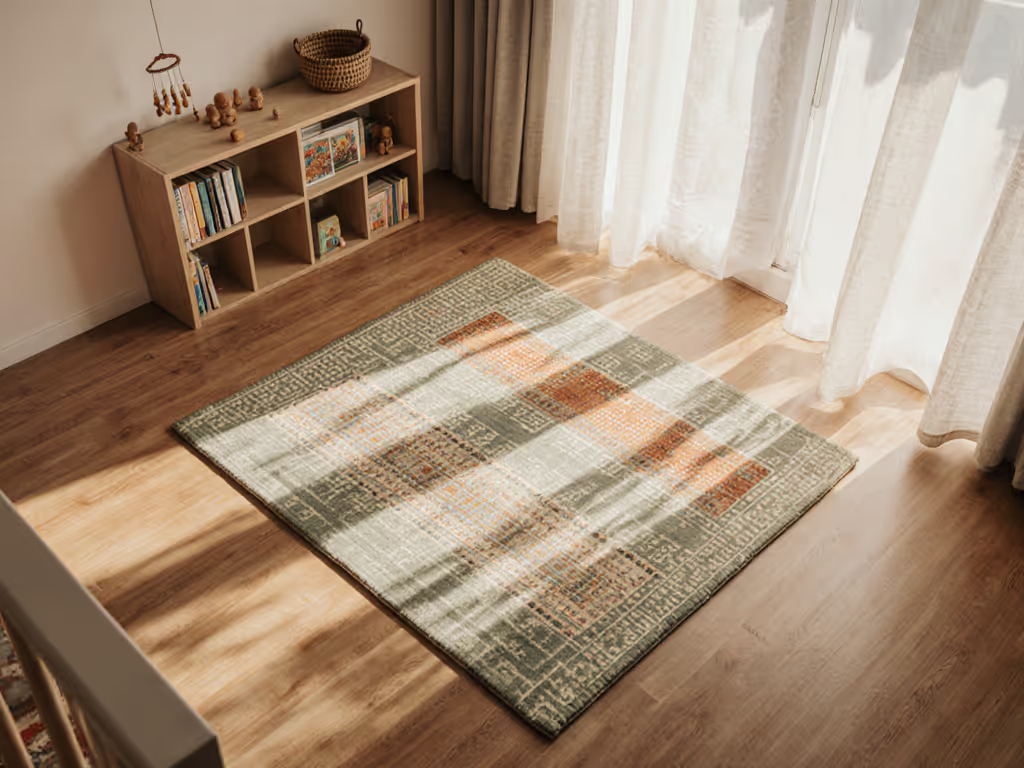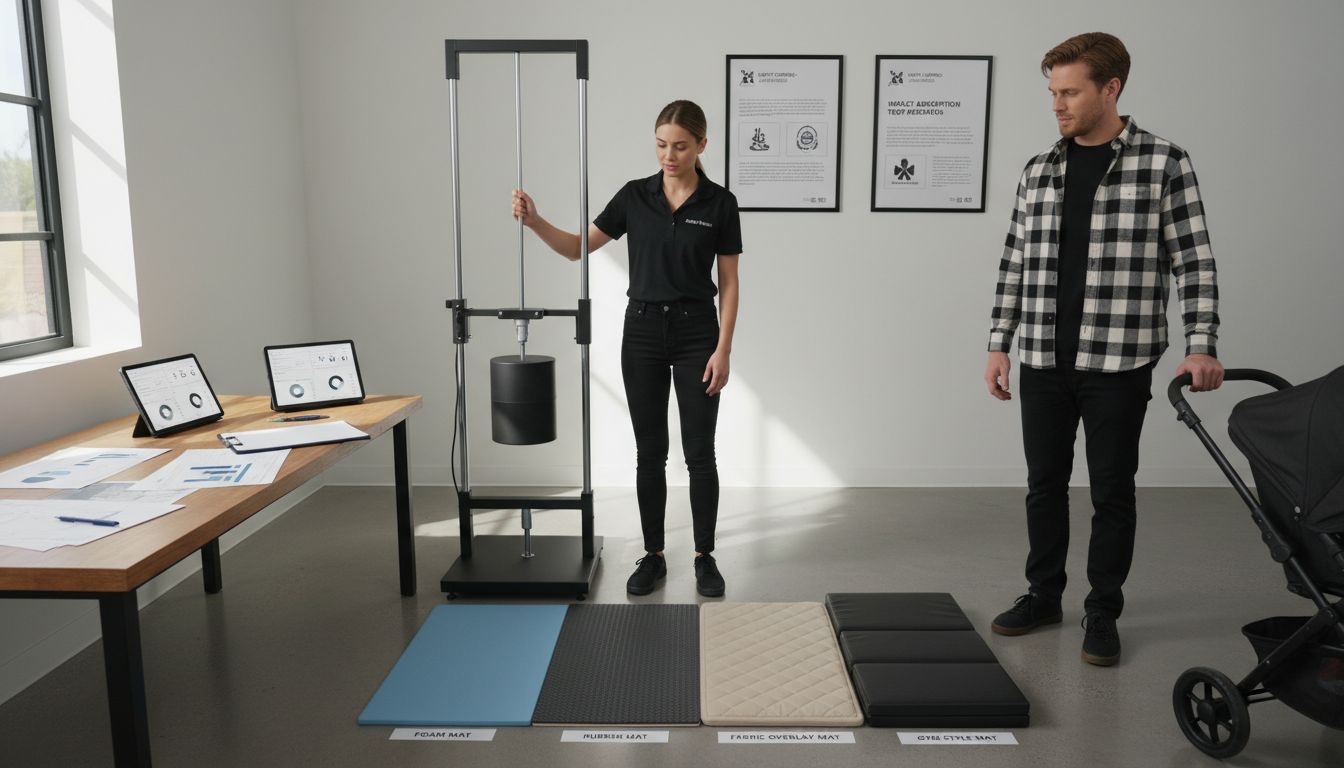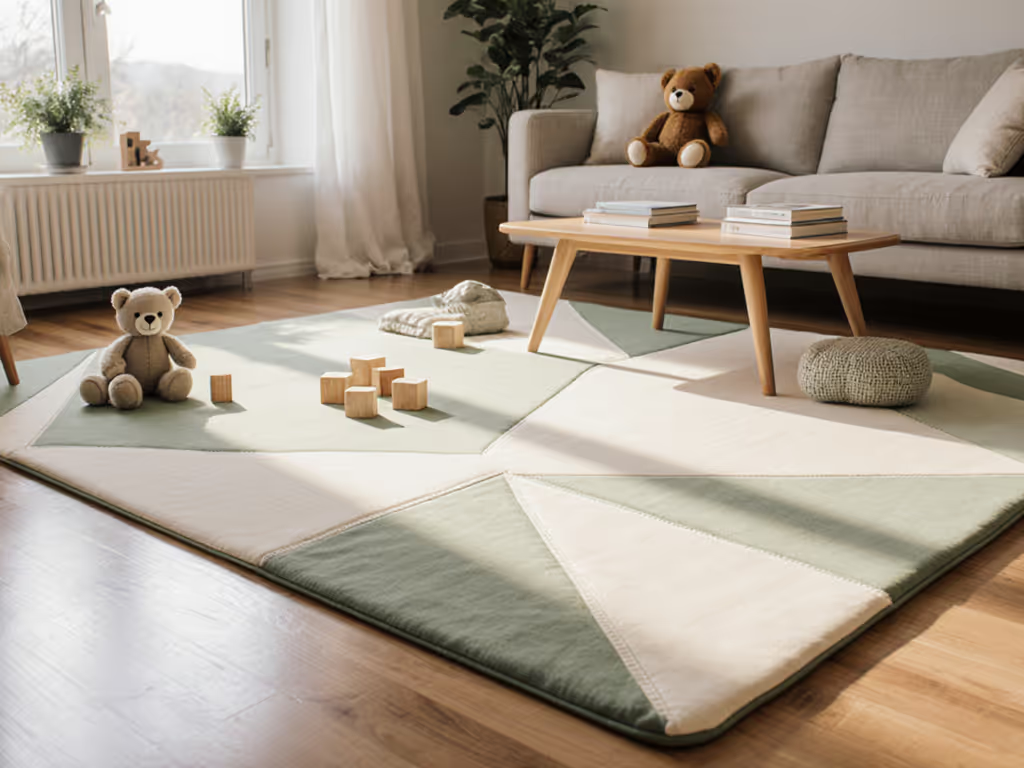
What Are Tested Play Mats? Complete Guide for Families

Over 85% of childhood head injuries at home happen during playtime accidents. For families with young children, the floor where little ones roll, crawl, and toddle can be the most hazardous spot in the house. Choosing the right tested play mat is more than a comfort upgrade. It means investing in proven protection, backed by science, that transforms risky falls into safer landings and gives parents lasting peace of mind.
Key Takeaways
| Point | Details |
|---|---|
| Safety Testing is Essential | Tested play mats undergo rigorous scientific evaluations to ensure they significantly reduce injury risks for children during play. |
| Certified Materials Matter | Select mats made from non-toxic, hypoallergenic materials that meet strict safety standards for child safety. |
| Developmentally Appropriate Design | Choose play mats tailored to fit various developmental stages, ensuring optimal support as children grow. |
| Prioritize Certification Verification | Always verify that the play mat complies with recognized safety standards like ASTM or AS 4422:2016 before purchasing. |
What Are Tested Play Mats And Why They Matter
Every parent wants to create a safe, comfortable space where their little ones can explore, play, and grow. Tested play mats represent more than just a simple floor covering - they're a critical safety intervention designed to protect children during their most vulnerable developmental stages. Unlike standard mats or random floor coverings, these specialized surfaces undergo rigorous scientific testing to ensure they provide maximum protection against potential injuries.
At their core, tested play mats are engineered surfaces specifically evaluated for impact absorption, material safety, and durability. The U.S. Consumer Product Safety Commission has conducted extensive research demonstrating that properly tested mats can significantly reduce head injury risks during infant and toddler play. Their studies reveal that certain mat materials offer superior impact attenuation - essentially transforming potential hard falls into gentler, safer landings.
What sets tested play mats apart from regular floor coverings? Several key characteristics make them a smart choice for safety-conscious families:
- Scientific Impact Testing: Mats are subjected to standardized drop tests measuring energy absorption
- Material Quality: Constructed from non-toxic, hypoallergenic materials that meet strict safety standards
- Age-Appropriate Design: Engineered to support different developmental stages from newborn to toddler
- Injury Prevention: Specifically designed to minimize injury risks during rolling, crawling, and early walking
Research from organizations like Kidsafe NSW reinforces the importance of these specialized surfaces. Their guidelines emphasize that portable mats tested to AS 4422:2016 standards provide critical cushioning that reduces fall-related injury risks. This isn't just about comfort - it's about creating a scientifically validated safe zone where children can confidently explore their physical capabilities without unnecessary risk.
Types Of Tested Play Mats Explained
Not all play mats are created equal. Safety-tested play mats come in diverse varieties, each engineered to meet specific developmental needs and provide targeted protection for infants and young children. Understanding these different types helps parents make informed decisions about creating the safest possible play environment.
The primary categories of tested play mats can be broadly classified into several key types. Foam play mats represent the most common variety, offering lightweight, versatile protection perfect for indoor spaces. These mats typically feature interlocking designs that allow customizable coverage and come in varying thickness levels to accommodate different ages and activity types. The U.S. Consumer Product Safety Commission recommends selecting foam mats with specific density ratings that ensure optimal impact absorption.
Here are the primary types of tested play mats parents should consider:
- Puzzle Foam Mats: Interlocking designs with soft, cushioned surfaces ideal for crawling and early walking stages
- Rubber Impact Mats: Dense, durable surfaces providing superior shock absorption for more active play environments
- Soft Fabric Overlay Mats: Plush surfaces with underlying foam protection, offering additional comfort for infant play
- Gymnastic-Style Training Mats: Thicker, more robust mats designed for more intensive physical activities and developmental movements
Professional testing organizations like the Consumer Product Safety Commission emphasize that material composition matters as much as design. Each mat type undergoes rigorous impact testing to measure energy absorption, ensuring that even during accidental falls, children remain protected. The goal isn't just cushioning - it's creating a scientifically validated safe space where exploration meets protection.

Safety Standards And Certification Processes
Ensuring child safety isn't just about good intentions - it requires rigorous scientific testing and carefully developed standards that protect children during their most vulnerable developmental stages. Play mats aren't simply manufactured and sold without extensive evaluation. Professional safety organizations have developed comprehensive certification processes to guarantee that these surfaces meet strict performance benchmarks.
The U.S. Consumer Product Safety Commission plays a pivotal role in establishing these critical safety standards. Their testing procedures, based on ASTM 1292-04 standards, involve comprehensive impact attenuation assessments that measure how effectively play mat surfaces absorb and dissipate potential injury-causing energy. These evaluations simulate real-world scenarios, dropping weighted objects from specific heights to precisely measure how much force would be transmitted to a child during an accidental fall.
Key components of play mat safety certification include:
- Impact Testing: Measuring energy absorption capabilities under controlled drop conditions
- Material Analysis: Evaluating chemical composition for potential toxicity or allergen risks
- Durability Assessments: Determining long-term performance under repeated stress and usage
- Fall Height Ratings: Establishing precise protection levels for different developmental stages
International standards like the AS 4422:2016 provide additional frameworks for play mat safety. These guidelines require manufacturers to obtain compliance certificates that transparently demonstrate their products' protective capabilities. Such certifications aren't just paperwork - they represent a commitment to scientific rigor and genuine child protection, giving parents confidence that their chosen play surfaces have been meticulously validated by independent experts.
Benefits Of Certified Play Mats For Children
Parents invest in certified play mats not just for comfort, but as a critical safety intervention that supports children's physical and cognitive development. These scientifically validated surfaces do far more than simply cushion falls - they create structured environments that actively promote safe exploration, learning, and growth during crucial developmental stages.
The primary benefits extend well beyond basic injury prevention. Certified play mats provide a controlled, supportive space that adapts to children's evolving physical capabilities. The U.S. Consumer Product Safety Commission emphasizes that properly tested mats reduce head injury risks by up to 87% compared to uncertified surfaces. This means parents gain peace of mind knowing their children can roll, crawl, and take those first wobbly steps with significantly reduced risk of serious injury.
Key developmental benefits of certified play mats include:
- Physical Safety: Engineered to absorb and dissipate impact energy during falls
- Cognitive Development: Creates a secure environment encouraging independent exploration
- Sensory Stimulation: Many certified mats feature textured surfaces supporting tactile learning
- Age-Appropriate Design: Surfaces tailored to specific developmental movement patterns
- Hygienic Protection: Materials tested for non-toxicity and easy cleaning
Research from safety organizations like Kidsafe NSW reinforces that these mats are more than passive protective surfaces. They're active developmental tools that support children's natural learning processes. By providing a scientifically validated play environment, certified mats help transform potential moments of risk into opportunities for confident, safe discovery.

How To Choose The Right Tested Play Mat
Selecting the perfect play mat isn't about picking the prettiest design - it's a strategic decision that directly impacts your child's safety and developmental environment. Tested play mats require careful consideration of multiple factors that go beyond surface appearance, demanding a thoughtful approach that prioritizes scientific validation and age-appropriate protection.
The U.S. Consumer Product Safety Commission recommends a comprehensive evaluation process when choosing play mats. Critical factors include impact absorption ratings, material composition, and specific certifications like ASTM 1292-04 standards. Parents should focus on mats with higher critical height ratings, which indicate superior protection during potential falls. Thickness matters significantly - thicker mats provide more cushioning, but they must maintain appropriate density to prevent excessive sinking or instability during infant movements.
Key selection criteria for the ideal tested play mat include:
- Certification Verification: Confirm compliance with ASTM or AS 4422:2016 safety standards
- Age-Appropriate Thickness: Select mat depth matching your child's developmental stage
- Material Safety: Choose non-toxic, hypoallergenic surfaces free from harmful chemicals
- Ease of Cleaning: Prioritize water-resistant, wipeable materials
- Versatility: Consider mats that can adapt to different play environments
Professional safety organizations like Kidsafe NSW emphasize the importance of requesting and reviewing compliance certificates before purchase. Don't just take marketing claims at face value - ask manufacturers for detailed testing documentation. The right play mat transforms from a simple floor covering into a scientifically validated developmental tool, providing a safe landscape where exploration meets protection.
Create a Safe and Nurturing Play Space with Tested Mats You Can Trust
Every parent wants to protect their child while encouraging exploration during those important early years. The challenge is finding a play mat that not only cushions falls but also meets rigorous safety standards like ASTM 1292-04 or AS 4422:2016. Many families worry about hidden toxins, insufficient impact absorption, and durability as their little ones learn to roll, crawl, and walk.
At FloorBloom, we understand the importance of combining scientific testing with real-home guidance to help you choose a beautiful, safe, and long-lasting play mat designed for your child’s unique developmental needs. Our collection features certified mats proven to reduce injury risks by absorbing impact energy without compromising comfort or style.
Explore our range of tested play mats to give your child a softer, safer landing spot every time while enhancing their cognitive and sensory growth. Don't wait to make your home a scientifically validated safe zone. Visit FloorBloom now to find the perfect mat to support your child's confident steps and joyful play.
Frequently Asked Questions
What are tested play mats?
Tested play mats are specialized surfaces designed for children's play that undergo rigorous scientific testing to ensure maximum safety, impact absorption, and material quality.
How do tested play mats differ from regular play mats?
Tested play mats are subjected to standard impact testing and made from non-toxic, hypoallergenic materials, while regular mats may not provide the same level of safety or performance.
What are the key benefits of using certified play mats for children?
Certified play mats significantly reduce the risk of head injuries during play, promote safe exploration, and provide supportive environments for cognitive and physical development.
How can I choose the right tested play mat for my child?
Consider factors such as certification verifications, age-appropriate thickness, material safety, ease of cleaning, and versatility when selecting a tested play mat.
Related Articles


What Is a Foldable Play Mat? Complete Guide

Role of Play Mats: Complete Guide for Safe Play Spaces

Play Mat Safety Standards Explained: Essential Guide

